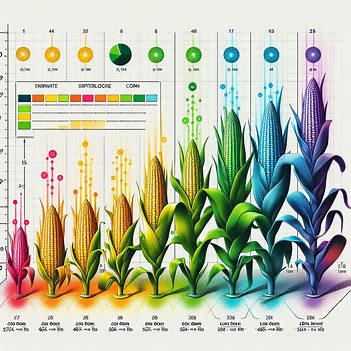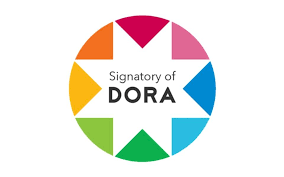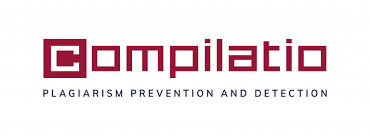Respuesta espectral del cultivo del maíz aplicando dosis diferenciadas de fertilización
DOI:
https://doi.org/10.56124/sapientiae.v7i13.0005Abstract
The research carried out in Santa Ana, Ecuador, seeks to correlate the Normalized Difference Vegetation Index (NDVI) with the Green Chlorophyll Index (GCI) in different phenological stages of corn, taking advantage of remote sensing through photogrammetric flights using the eBee drone. The results show a positive relationship between GCI and NDVI in all evaluated phases of crop growth, with outstanding coefficients of determination (R²): 0.9138 in the V5 state, 0.8912 in the V11 state, and 0.8461 in the VT stage (flowering). These values support the efficacy of the GCI as a reliable indicator of health and chlorophyll content in maize, despite slight variations by stage of development. These findings enrich scientific knowledge and provide valuable insights for implementing remote sensing in sustainable agricultural management and informed decision-making in agricultural production.
Downloads
References
Alfaro, M., y Muñoz, C. (2012). Ganadería y gases de efecto invernadero. Informativo Instituto de Investigaciones Agropecuarias, 90, 4. https://www.consorciolechero.cl/chile/documentos/fichas-tecnicas/24junio/ganaderia-y-gases-de-efecto-invernadero.pdf
Asadi, B., y Shamsoddini, A. (2024). Crop mapping through a hybrid machine learning and deep learning method. Remote Sensing Applications: Society and Environment, 33, 101090. https://doi.org/https://doi.org/10.1016/j.rsase.2023.101090
Botero, J., Gómez, A., y Botero, M. (2019). Rendimiento, parámetros agronómicos y calidad nutricional de la Tithonia diversifolia con base en diferentes niveles de fertilización. Revista Mexicana de Ciencias Pecuarias, 10(3), 789–800. https://doi.org/10.22319/rmcp.v10i3.4667
Caviedes, M., Carvajal, F. E., y Zambrano, J. L. (2022). Tecnologías para el cultivo de maíz ( Zea mays . L ) en el Ecuador Generation of technologies for the cultivation of corn ( Zea mays . L ) in Ecuador. Avances En Ciencias e Ingeniería, 14(1), 1–21. https://revistas.usfq.edu.ec/index.php/avances/article/download/2588/3111?inline=1
Cui, N., Cai, M., Zhang, X., Abdelhafez, A. A., Zhou, L., Sun, H., Chen, G., Zou, G., y Zhou, S. (2020). Runoff loss of nitrogen and phosphorus from a rice paddy field in the east of China: Effects of long-term chemical N fertilizer and organic manure applications. Global Ecology and Conservation, 22, e01011. https://doi.org/https://doi.org/10.1016/j.gecco.2020.e01011
Díaz, J. (2015). Estudio de índices de vegetación a partir de imágenes aéreas tomadas desde UAS/RPAS y aplicaciones de estos a la agricultura de precisión. In Universidad Complutense De Madrid. http://eprints.ucm.es/31423/1/TFM_Juan_Diaz_Cervignon.pdf
Dubey, A., & Mailapalli, D. R. (2016). Nanofertilisers, Nanopesticides, Nanosensors of Pest and Nanotoxicity in Agriculture. 307–330. https://doi.org/10.1007/978-3-319-26777-7_7
Fan, Y., Hao, X., Carswell, A., Misselbrook, T., Ding, R., Li, S., y Kang, S. (2021). Inorganic nitrogen fertilizer and high N application rate promote N2O emission and suppress CH4 uptake in a rotational vegetable system. Soil and Tillage Research, 206, 104848. https://doi.org/https://doi.org/10.1016/j.still.2020.104848
Fraceto, L. F., Grillo, R., de Medeiros, G. A., Scognamiglio, V., Rea, G., & Bartolucci, C. (2016). Nanotechnology in agriculture: Which innovation potential does it have? Frontiers in Environmental Science, 4(MAR), 1–5. https://doi.org/10.3389/fenvs.2016.00020
García, L., Vera, L., Zambrano, F., Zamora, A., & Cedeño, J. (2020). Pollen production in Theobroma cacao L. genotypes national type and ccn-51 and its relationship with climatic factors on the ecuadorian coast. Acta Agrobotanica, 73(2), 1–9. https://doi.org/10.5586/AA.7323
Instituto Nacional de Investigaciones Agropecuarias-INIAP. (2016). Estimación de la incidencia de plagas y enfermedades en el cultivo de maíz en las provincias de Los Ríos, Guayas y Manabí. https://repositorio.iniap.gob.ec/bitstream/41000/5388/1/iniapeeppdf58.pdf
Karmakar, P., Teng, S. W., Murshed, M., Pang, S., Li, Y., & Lin, H. (2024). Crop monitoring by multimodal remote sensing: A review. Remote Sensing Applications: Society and Environment, 33, 101093. https://doi.org/https://doi.org/10.1016/j.rsase.2023.101093
Lazaratou, C. V, Triantaphyllidou, I. E., Spyridonos, I., Pantelidis, I., Kakogiannis, G., Vayenas, D. V, & Papoulis, D. (2021). NO3−-N removal from water using raw and modified fibrous clay minerals and their potential application as nitrogen fertilizers in hydroponic lettuce cultivations. Environmental Technology & Innovation, 24, 102021. https://doi.org/https://doi.org/10.1016/j.eti.2021.102021
Lewin, S., Wende, S., Wehrhan, M., Verch, G., Ganugi, P., Sommer, M. & Kolb, S. (2024). Cereals rhizosphere microbiome undergoes host selection of nitrogen cycle guilds correlated to crop productivity. Science of The Total Environment, 911, 168794. https://doi.org/https://doi.org/10.1016/j.scitotenv.2023.168794
Luo, H., Zilio, M., Sigurnjak, I., Robles-Aguilar, A. A., Michels, E., Adani, F., De Neve, S., & Meers, E. (2023). Dynamics of soil nitrogen and N-cycling-related genes following the application of biobased fertilizers. Applied Soil Ecology, 191, 105033. https://doi.org/https://doi.org/10.1016/j.apsoil.2023.105033
Ma, Q., Qian, Y., Yu, Q., Cao, Y., Tao, R., Zhu, M., Ding, J., Li, C., Guo, W.,& Zhu, X. (2023). Controlled-release nitrogen fertilizer application mitigated N losses and modified microbial community while improving wheat yield and N use efficiency. Agriculture, Ecosystems & Environment, 349, 108445. https://doi.org/https://doi.org/10.1016/j.agee.2023.108445
Montoya, A. (2019). Estudio del impacto de la variabilidad climática sobre el rendimiento del cultivo de maíz en Ecuador [Escuela Politécnica Nacional]. https://bibdigital.epn.edu.ec/bitstream/15000/20731/1/CD 10249.pdf
Muñoz, P. (2013). Apuntes de Teledetección: Índices de vegetación. In Centro de información de recursos Naturales. http://bibliotecadigital.ciren.cl/bitstream/handle/123456789/26389/Tema Indices de vegetación%2C Pedro Muñoz A.pdf?sequence=1&isAllowed=y
Ning, Z., Hou, Y., & Xu, X. (2024). Optimized strategies for nitrogen fertilizer application in Populus plantations in the context of climate change mitigation. Forest Policy and Economics, 159, 103139. https://doi.org/https://doi.org/10.1016/j.forpol.2023.103139
Organización de las Naciones Unidas para la Alimentación y la Agricultura-FAO. (2019). Creciendo a un ritmo menor, se espera que la población mundial alcanzará 9.700 millones en 2050 y un máximo de casi 11.000 millones alrededor de 2100: Informe de la ONU. https://population.un.org/wpp/publications/Files/WPP2019_PressRelease_ES.pdf
Organización de las Naciones Unidas para la Alimentación y la Agricultura-FAO. (2021). Crops and livestock products. https://www.fao.org/faostat/en/#data/QCL
Ostaiza, K., Jarre, E., Pacheco, H., & Zamora, E. (2020). Propuesta híbrida para la captación y medición de CO2 edáfico empleando cámaras de incubación estáticas y secuestramiento de gases. Revista Tecnica De La Facultad De Ingenieria Universidad Del Zulia, ve2020(2), 33–40. https://doi.org/10.22209/rt.ve2020n2a05
Rodríguez, A., Lopez, T., Meza, L., y Loboguerrero, A. (2015). Innovaciones institucionales y en políticas sobre agricultura y cambio climático. Evidencia en América Latina y el Caribe. Comisión Económica para América Latina y el Caribe (CEPAL).
Rouse, J. W., Hass, R. H., Schell, J. A., & Deering, D. W. (1973). Monitoring vegetation systems in the great plains with ERTS. Third Earth Resources Technology Satellite (ERTS) Symposium, 1, 309–317. https://ntrs.nasa.gov/archive/nasa/casi.ntrs.nasa.gov/19740022614.pdf
Saynes, V., Etchevers, J., Paz, F., y Alvarado, L. (2016). Emisiones de Gases de Efecto Invernadero en sistemas agrícolas de México. Greenhouse Gas Emissions in Agricultural Systems in Mexico. Terra Latinoamericana, 34, 83–96.
Sergieieva, K. (2022). Índices De Vegetación En La Agricultura Digital. EOS Data Analytics. https://eos.com/es/blog/indices-de-vegetacion/
Zhang, J., Pan, Y., Tao, X., Wang, B., Cao, Q., Tian, Y., Zhu, Y., Cao, W., & Liu, X. (2023). In-season mapping of rice yield potential at jointing stage using Sentinel-2 images integrated with high-precision UAS data. European Journal of Agronomy, 146(December 2022), 1–14. https://doi.org/10.1016/j.eja.2023.126808

Published
How to Cite
Issue
Section
License
Copyright (c) 2024 Revista Científica Multidisciplinaria SAPIENTIAE. ISSN: 2600-6030.

This work is licensed under a Creative Commons Attribution-NonCommercial-ShareAlike 4.0 International License.

2.jpg)


















